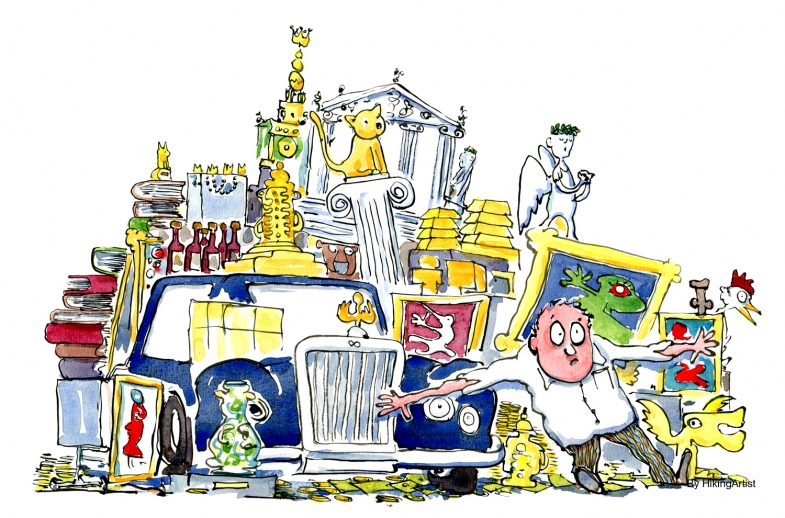If “The best things in life aren’t things” as the plaque (ironically, another “thing”) on my desk reminds me, then why do I have so many things? Why do my children have so many things and why do I continue to buy things? I’m sure If’m not alone in asking these questions. Especially at this time of year when we are more inclined to buy “things”.
I must admit to feeling somewhat conflicted when trying to discourage myself, and others, from buying things. I know that buying and selling is what makes the world turn. If things weren’t bought, then lots of people would suffer, least of all the receiver.
Nevertheless, it’s a good idea from time to time to take stock of what we have and what we really need.
I often hear parents talk about how unappreciative they feel their children are and how little time they spend with an item before tossing it aside and looking for something new and exciting to keep their attention. Often it’s the latest technological gadget. Sometimes it’s the most up to date piece in the fashion world. Sorry parents, but I think we have ourselves to blame for that. Our children don’t come into this world wanting for anything other than our love and attention. It’s up to us to put the brakes on some times, to live with the consequences of saying no. It’s up to us to help our children learn the value of what they have by modelling this ourselves.
How about:
1. Re evaluate the wish list idea. Wish lists should be just that. Wishes. Some wishes come true and others don’t. If you don’t want to discard it completely, maybe pick one item from it and let your children know this in advance. If your children are used to getting every one of their wishes met, then there is bound to be disappointment if and when they don’t. So, be careful about setting a precedent.
2. Take everything out of drawers and cupboards at least once a year. This need not all take place over one weekend but can be divided up throughout the year. Ask yourselves whether you’ve actually used each item or piece of clothing over the past six months. If not, consider donating it to a friend or charity. This can also be somewhat of a treasure hunt. Most of us have so much that we find items we don’t even remember owning.
3. Keep your home organized. This reduces the chance of replicating items. For example, if you have all your erasers and pencils in one drawer of the house, you’ll know when you’ve run out and when its time to buy more. If they’re scattered throughout the house, you may be tempted to buy another pack of pencils rather than scour the house for stray items.
4. Model delaying gratification. If your children see you buying on impulse, then they will be more inclined to do the same. This is not to say that you should never buy something you hadn’t planned on, but this should be more the exception than the rule. If an item can wait, then model saving for it or waiting a period of time before re visiting whether you really want, or need, it.
5. Rather than buying “things” for one another’s birthdays, holidays or special occasions, think of something creative that will enrich that persons life with a special memory or experience rather. You may decide as a family that instead of spending money on expensive items that no one really needs, that you’d rather invest that money in a family vacation where you can take lots of pictures that will last you a lifetime.
6. Instead of buying another mug, box of chocolates or scarf for your child’ teacher or relative, consider making a donation to a charity in his or her name. Or if you’d prefer, purchase a gift certificate towards an experience – dinner and a movie, for example.
I guess it’s time for me to take my own good advice!
